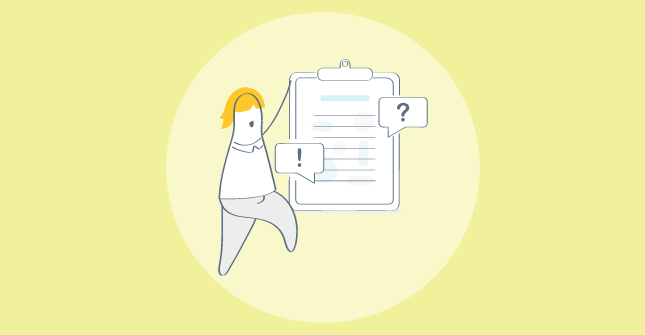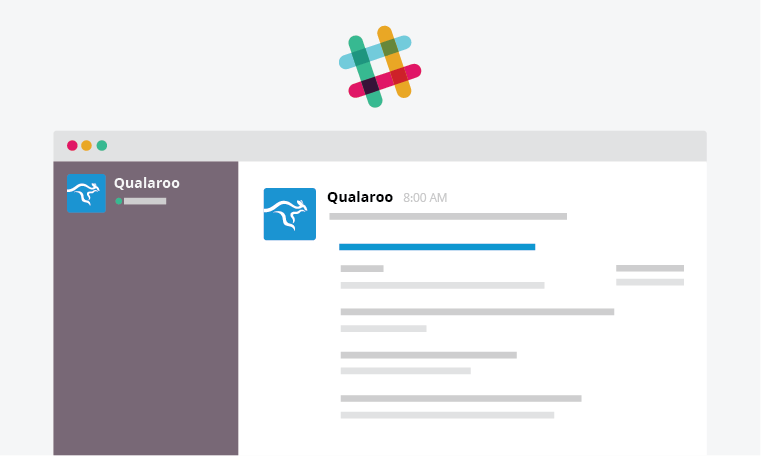
As a UX designer, getting your leadership to support your major projects can be as much about talking the talk as it is about walking the walk. As much value as your work may provide, you also have to know how to sell it in a world of competing priorities and looming deadlines.
Every team member has their own list of things they need to work on, push to finish, etc. so what’s on your list may not always be top of mind. This is normal but can present challenges when you need to get your managers’ sign-off or otherwise get somebody on board with an idea or initiative. If you’re part of a relatively small company, you may even have to get buy-in from people in other departments who don’t always speak your language.
But learning how to frame your arguments doesn’t have to be difficult. When you do start making the case for a design decision or have a talk about project prioritization, you’ll want to come prepared with the right points and vocabulary. That’s why we’ve put together a list of words you can weave into these types of conversation to help take your argument to the next level.
1. Persona
Definition: At its core, a persona is a representation of your target user or audience. Typically, personas are given names, photos, and a list of characteristics to help humanize them. Many teams will print charts and pictures of their personas to keep posted around the office as a kind of guiding light.
Why it matters: Having trouble convincing your team to get on board with an insight that came out of user research? Mentioning personas can help. As a UX designer, it’s your job to create something that your persona would not only find valuable (and give you money for…) but also usable and hopefully even delightful. Next time you’re having trouble with a design feature that would really hit home with your persona, frame it was something “Marketing Manager Maya” (or whatever you call your target persona) would want out of their software.
2. Quantitative Data
Definition: Measurable numeric information that lends itself easily to statistical analysis and can be used for benchmarking against traditional metrics. When people refer to data, they’re typically talking about quantitative data.
Why it matters: Numbers don’t lie. If you’re looking for a way to really drive home a point to your leadership, using or referring to quantitative data is usually a safe bet. This can be a helpful way to frame the impact of design decisions. For example, let’s say your team just redesigned its free trial experience. To really understand the impact of the redesign, you’ll want to look at quantitative data from before and after the redesign such as action completion rates, conversions from free to paid accounts, and more. If the numbers are on your side, definitely turn to quantitative data to get your team on board.
3. Qualitative Data
Definition: Collected information that is not in numeric form, but rather is based on characteristics and other types of data. Qualitative data helps describe trends but not necessarily define them the way quantitative data does. Where quantitative data defines, qualitative data describes. Ultimately both are necessary to paint a full picture.
Why it matters: This type of data is important for understanding the “Why?” from your quantitative data. Without it, we only understand what is happening, without much context as to why. If you have conducted user research or user testing, definitely bring up any supporting qualitative data when discussing design decisions with your leadership team. Whether it’s a soundbite that stood out or a theme that came up in analyzing several responses, qualitative data will bring the conversation back to the user in a rich way.
4. Customer (User) Journey Map
Definition: “Customer journey mapping is the process of analyzing and understanding what happens with your user or customer throughout their entire journey with your product or service. It requires researching what the user experience is like across all touchpoints and the sentiments users experience along the way. The output is a chart (called a map) that visualizes your customer’s experience. But more than just a timeline or chart, customer journey maps are built on empathy and research, pushing creators to consider how users’ feelings fluctuate throughout their journey.”
PS, this definition is straight from our guide to customer journey mapping, feel free to check it out if you’d like to learn more about them and access our free template.
Why it matters: If your team has gone through the work to put together a customer/user journey map, use it and bring it up often! Ideally, these maps are put together as the result of a cross-functional team putting their heads together to conduct and compile user research. These maps are incredibly useful as they give us a snapshot of the user’s entire experience. Use it and refer to it when making design decisions to optimize for the best possible user experience.
5. Accessibility
Definition: The Interaction Design Foundation describes accessibility as “users’ ability to use products/services, but not the extent to which they can attain goals (usability). Designers should create output accommodating the needs of all potential users, be they disabled (e.g., color-blind users) or anyone facing situational barriers (e.g., being forced to multitask).” The distinction between usability and accessibility is particularly important to remember.
Why it matters: Accessibility isn’t just the right thing to do, it can be a legal obligation. In fact, there were 814 lawsuits filed against businesses for their inaccessible websites. Accessibility also makes good business sense. When teams don’t have an eye for accessibility, they’re not only excluding a wide swath of people and putting the company in danger of legal trouble, they’re also losing a lot of business! Moreover, accessible websites are just generally better. InVision designer Pablo Stanley writes, they “have better search results, they reach a bigger audience, they’re SEO friendly, have faster download times, they encourage good coding practices, and they always have better usability.” If your team may be tempted to cut corners, remind them about the big impact accessibility can have.
6. Return on Investment (ROI)
Definition: ROI is a measure of output vs. input. Often measured in dollars, this is a metric used to describe the value a certain activity brings to the business.
Why it matters: The term ROI is a corporate favorite. Probably because it’s the one metric by which all projects can and should be measured. If you know that a particular UX improvement can make a big impact on the user experience, one effective way to sell this change to your leadership team is to frame it as having an impact on the bottom line, or having a good return on investment (ROI). This can be a particularly effective term if the changes proposed can be fixed relatively easily or quickly, but have a big return.
7. Conversion Rate (CR)
Definition: In general terms, a conversion rate can be defined as the number of users that took the desired action out of the total number of users that had the opportunity to take that action. For example, the conversion rate on a trial sign up page would be how many actually signed up for a trial over how many people viewed the page.
Why it matters: Conversion rate and conversion rate optimization are metrics that marketers and web specialists use to measure the quality of their content or effectiveness of their landing pages. While it’s certainly a relevant metric for marketers, it’s a valuable metric for UX professionals too. When you make a design change or create a feature with the intention Valuable to understanding so that design and usability decisions can be made to increase conversions. Testing design variations for impact on conversion rates can be a useful tactic when deciding between different designs.
8. User-centered Design
Definition: According to the Interaction Design Foundation, user-centered design is “an iterative design process in which designers focus on the users and their needs in each phase of the design process.”
Why it matters: User-centered design is an approach that encourages both accessibility and usability by understanding the users’ needs and desired actions. Really, user-centered design is what user experience, as a discipline, is all about. When leadership or other team members aren’t centering the user, bringing up this principle can be a helpful way to reframe the conversation. Ask them, how does this affect our user?
9 & 10. Design Debt and Marginal Degradation of Brands
Definition: Speaker and UX Designer Michal Mazur describes design debt as “all the good design concepts or solutions that you skipped in order to reach short-term goals.”
Why it matters: This term was actually inspired by something called “technical debt” a term credited to the developer and thinker, Ward Cunningham. Cunningham coined this term to describe the price teams pay for rushing releases with non-optimal solutions or preventable bugs. The same concept can be applied to design. With timelines and constraints, it’s not uncommon for teams to have thought of a better design but not been able to implement it. This, too, has a cost.
So what, you may be thinking, every team runs into issues like this. Why would my department head care? Well, these issues add up and designer Mark Boulton has a word for the aggregate: the marginal degradation of brands. This concept is used to describe the effect that a combination of small user experience issues can have on a user. In the long term, it’s essentially going to lead to a lack of trust in the brand. If you’re feeling the heat to cut corners, remind your leaders of the long-term effects of leveraging design debt: marginal degradation.
11. Usability
Definition: Put simply, “usability is a quality attribute that assesses how easy user interfaces are to use.” In action, usability is comprised of a number of factors. Whether it’s findability or functionality, how usable your product is will be the aggregate impact of a number of factors.
Why it’s important: While this may seem like a painfully obvious word, it’s a good term to keep top of mind for your leadership. Usability is important because it affects the extent to which your product is adopted and how likely someone is to keep using it. If your product isn’t usable, your users will notice. And they’ll stop using your product and eventually stop paying you.
12. A/B or Multivariate Testing
Definition: A form of testing in which variables are isolated and measured against each other to determine the most desirable combination. In UX design, this can look like testing different microcopy or button colors.
Why it’s important: Testing is useful in the design process for understanding the impact of individual design choices and which combination of decisions results in the most ideal outcome, for example, a higher sign-up rate.So how can you use this term to your advantage? When you come to a draw in a meeting about what wording to use or the finer points of a design, just say “let’s A/B test it.” Ideally, you can anticipate which design will perform best if you’ve done user research or testing. But there’s no better way to really reach a conclusion about what works better than an A/B test.
13. Opportunity Cost
Definition: This is a term with origins in economics that’s used to describe what you forgo when you make a particular decision to use resources in one way and not another.
Why it matters: No matter what project or activity you’re discussing, there’s always an opportunity cost associated with it. In the case of UX research, it can often take up only a small part of the budget but not conducting it can have a huge opportunity cost in terms of missed insights. The same applies to which features we choose to develop or which user insights we choose to act or not act on. If you’re needing to compromise on a project or timeline, it can be helpful to remind the powers that be about the associated opportunity cost.
14. Product Roadmap
Definition: A product roadmap is essentially a game plan for aligning short term actions with long term goals in terms of product development and the overall product strategy. It structures what features will be built or changed and the associated timelines. Product teams use it as a master plan for the coming months and to keep teams on board with the vision for a product.
Why it matters: If your UX department operates separately from the product team, this tool is valuable for being on the same page. If you operate as part of the same team, you need to make sure UX priorities are factored into the product roadmap and not just new features or integrations. Improving the experience of user experience of your product will require collaborating with the product team, and vying for a spot on the product roadmap.
15. User Insights
Definition: User insights are the actionable output of user research. More than just soundbites or data points, user insights are what user research really tells us and ultimately how that informs our activities and priorities as a User Experience department.
Why it matters: It can be hard to understand user hangups on a product that you (the designer) are so intimately familiar with. User insights help you understand what your product looks like on the outside and reprioritize resources based on those insights. They enable user-centered design and should be leveraged in conversations as they are at the core of UX.
We hope this list helps you frame the conversation next time you have to defend a design decision to your leadership team. Check out our last blog post for more ideas on how to get executive buy-in for a user research tool here.
FREE. All Features. FOREVER!
Try our Forever FREE account with all premium features!




